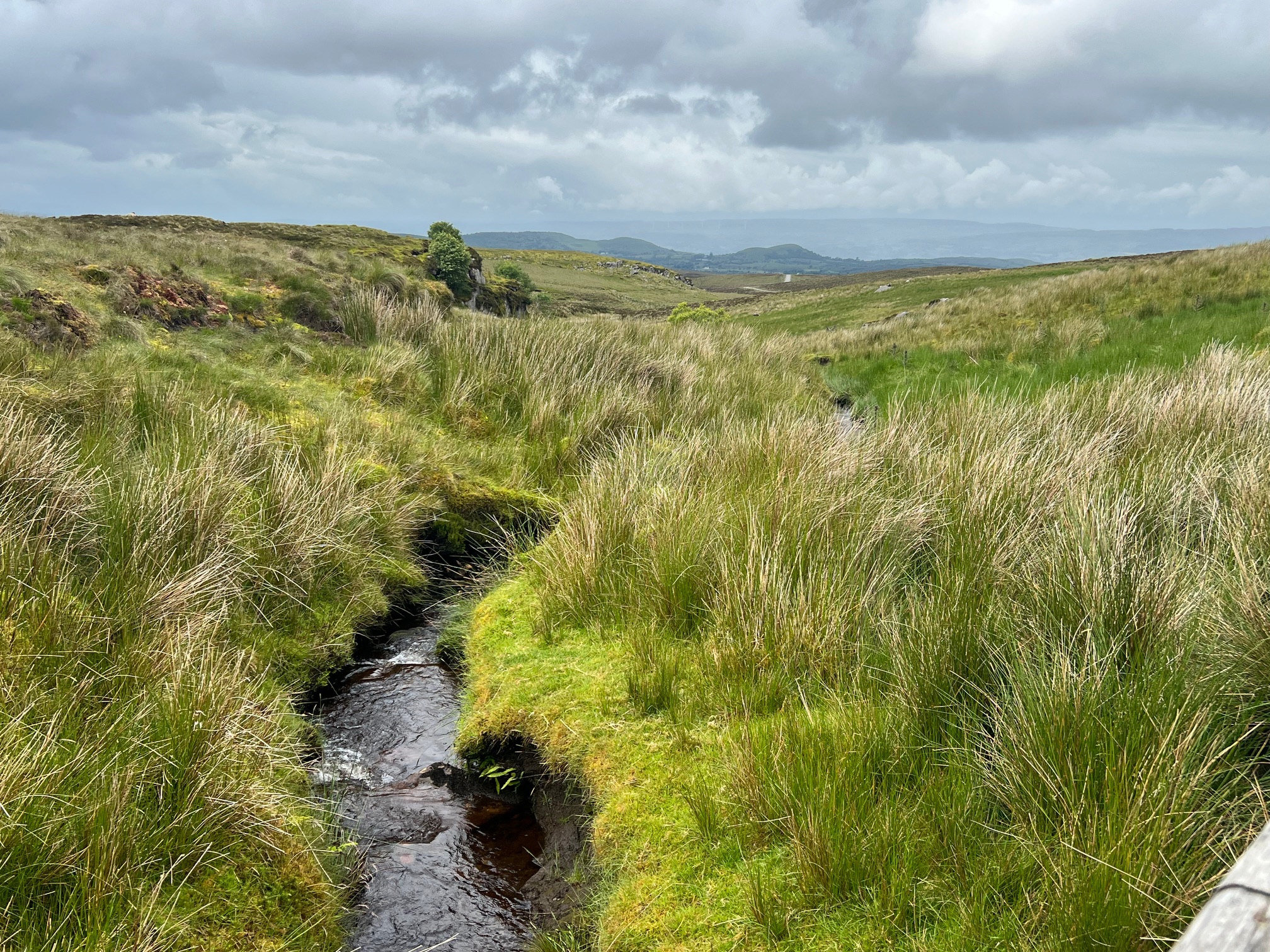Two years ago we fell in love with Northern Ireland. The friendly people, serene countrysides that come in a million shades of green, great golf courses, and delightful food made it an easy decision to return.
Unlike our last drama-filled trip here, flights went smoothly and luggage arrived on time. To celebrate, we had a commemorative cup of coffee at the little shop where, two years ago, a friendly airline employee met us with our golf clubs-three days after our arrival.
A little sleep-deprived but looking forward to another great Irish adventure, we picked up our rental car and began our journey. I am so thankful that my dear husband is comfortable driving a manual shift on the other side of the road. His driving gives us the freedom to explore at will.

After a two-hour drive from the airport, we arrived at the Slieve Russell Hotel and Golf Club, our home for three days. We are grateful that a friend who has relatives in the area recommended this lovely place.

The resort golf course is right outside our window.

Paul was happy to start his day with a full Irish breakfast. And I was happy to get a vegetarian version.

Cuilcagh Boardwalk Trail
Ireland’s bogs have fascinated me since I read a novel based on the discovery of a body preserved in a Irish bog for more than a thousand years. So, I was excited to discover that the Cuilcagh Boardwalk Trail, one of the largest expanses of blanket bogs in Northern Ireland, was just a thirty-minute drive away.
After only one missed turn, we arrived at the trail ready for an interesting hike. Dressed for a typical Irish day of potential rain, we began our hike on the limestone landscape that leads to the bog.

As we made our way up the gentle hill, we looked back at a misty view of beautiful rolling hills.

After hiking a short distance, we came to a meandering boardwalk through the lowest part of the bog.

Bog cotton, beautiful little white flowers that bloom in the spring, danced across the bog.

For most of our hike, clouds covered the top of Cuilcagh Mountain in the distance.

Irish Bogs
A bog is a wetland of soft, spongy ground consisting mainly of partially decayed plant matter called peat. These ancient bogs began forming in Ireland between 7,000-10,000 years ago.
More than just a geographic feature, bogs are a mythic feature, as well. Irish poetry, myths and folklore mention bogs and their magic. For example, will-o-the-wisp, which look like dancing fairy lights, appear over the bogs in the darkest of nights. Although there is a scientific explanation for this phenomena, long ago people believed the lights were the spirits of the departed attempting to lure travelers into the bog.
Beautiful as they are, bogs can be treacherous. They can swallow up people who inadvertently wander into them and preserve their bodies for years.
Scientists have recovered preserved bodies that are thousands of years old. Called bog bodies, these recovered bodies are on display at The National Museum of Ireland. In 1977, researchers discovered a Stone Age site that held artifacts from the Mesolithic era, around 8,000 years ago.
A sign along the walkway reminded us of the bog dangers.

For centuries bogs provided turf for domestic heating and cooking. Now, as the environmental cost of using bogs in this way has become apparent, the practice is being phased out. Today, healthy bogs are quite rare, with just 1% remaining active.
Although bogs no longer provide fuel, they provide wild spaces and havens for biodiversity. They also accumulate and store millions of tons of carbon and help control the green house gasses that contribute to climate change.


After a beautiful hike and wonderful dinner, our first day ended on a perfect note when our kids in Minnesota FaceTimed us to wish Paul a Happy Father’s Day.
